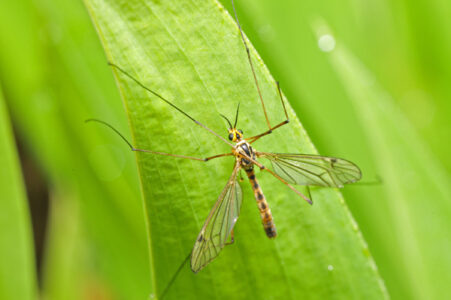Learn about mosquito behavior and habitats and why they are driven to bite.
Mosquito Behavior and Habitats
North America is home to more than 170 species of mosquito, which vary in size, geographic distribution and behavior. They all need to lay their eggs in standing water (either fresh, salt or brackish). Larvae hatch in two to three days — or two to three months if the weather is not right. The larvae, called wrigglers, feed in the water for a week or so, then pupate for only a few days before emerging as adults.
Male adult mosquitoes feed mostly on flower nectar and do not bite humans, but female mosquitoes require high-protein blood meals to produce eggs. In a single feeding, a female mosquito doubles her weight, and she’s usually ready to feed again in three to four days. Species vary in their preferred times to feed; many feed from twilight into the night, while others are active during the day. Some species prefer to dine on the blood of birds or other animals, while some, called anthropophilic mosquitoes, like humans best. The wiliest species switch around with the seasons, seeking out humans when they can find them, and settling for other animals when people are scarce.
To attract a mosquito, simply exhale. In doing so, you breathe more than 100 volatile compounds into the air; simultaneously, your skin releases another 100 or so, including some that mosquitoes pick up with chemoreceptors on their antennae. Following your gaseous plume, mosquitoes move in, where they are attracted more intensely by the warmth and moisture of your body. Then comes the bite.
If you think you are being bitten while your companion is not, you may be right: Some people attract more mosquitoes than others, according to Iowa State University entomologist John VanDyk.
Barbara Pleasant, a regular contributor to MOTHER EARTH NEWS, is the author of The Gardener’s Bug Book. Her most recent book, Garden Stone, received the Garden Globe award from the Garden Writers of America.




